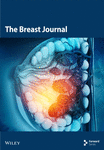Biomarkers Predictive of Short-Interval Breast Cancer Development in High-Risk Women
Abstract
Abstract: Biomarkers highly predictive of short-term risk of breast cancer are needed to identify women most likely to benefit from prophylactic measures or chemopreventive agents. We have utilized random fine-needle aspiration (FNA) of breast ductal tissue because FNA is minimally traumatic, allowing aspiration to easily be repeated at follow-up intervals of months to years. We performed breast FNA on 213 women at high risk and 30 women at low risk for breast cancer. High-risk women were those with a first-degree relative with breast cancer, prior breast biopsy indicating atypical hyperplasia or carcinoma in situ, a history of prior breast cancer, or some multiple of these factors. Aspirates were analyzed for cytologic changes and biomarker abnormalities of DNA aneu-ploidy and overexpression of estrogen receptor (ER), epidermal growth factor receptor (EGFR), p53, and HER-2Ineu.
Cytologic evidence of hyperplasia with or without atypia as well as individual or multiple biomarker abnormalities were more frequent in the high-risk than the low-risk group. At a median follow-up of 32 months, five women have been diagnosed with ductal carcinoma in situ (2) or invasive cancer (3). By multivariate analysis, development of cancer, detection of cancer, or both was primarily predicted by atypical hyperplasia and secondarily by Gail risk at 10 years, menopausal status, and p53 overexpression. The combination of atypical hyperplasia and multiple biomarker abnormalities (restricted to the three-marker set of ploidy, p53, and EGFR) was observed in four of the five cases of cancer. Cytology and biomarker expression in cells obtained from random FNA sampling of breast tissue are being explored as risk predictors as well as surrogate response biomarkers for phase II cancer chemoprevention trials.




